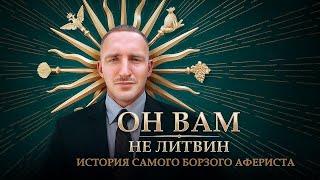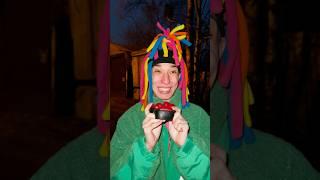![Смотреть [2020] Lost Cosmonauts, Planet X and other Cosmos Mysteries (Intrigue Journal) [2020] Lost Cosmonauts, Planet X and other Cosmos Mysteries (Intrigue Journal)](https://hdtube.cc/img/full/QW1ZejlSTkNxd0I.jpg)
[2020] Lost Cosmonauts, Planet X and other Cosmos Mysteries (Intrigue Journal)
https://intriguejournal.com/conspiracy-theories-of-the-cosmos/
Conspiracies in the Cosmos
A second sun? A ninth planet? Cosmonauts lost in space? Murder? Welcome to 2020 and another year of exploring Intrigue and Mystery! The start of a new year invokes reflection and anticipation. One thing is certain, whether we go backward or forward in time, we’ll find mysteries to delight in and conspiracies to consider – even in science. And why not? Science IS wildly creative. Our working theories are literally our best guess – our best explanation for an observation – until we come up with something better. We kick off the New Year with some Intriguing theories and conspiracies floating around in space and time.
The Sun’s Evil Twin:
It’s a sensational story, the evil twin, and not uncommon for a daytime drama. But in the cosmos? There’s solid science to back up the possibility that another star, a twin to our Sun, exists. Mathematical models tell us almost every star is born with a buddy, that binary systems are common and the fact that we have only one is unusual.
Let’s walk through the science around this crazy idea…
A team from UC Berkley studied the Persius Cloud, a stellar nursery 600 light-years away. They input the data into computer simulations to model different scenarios. In the end, the only way to make all the pieces fit is to conclude that ALL stars with the mass of our sun begin as part of a binary system.
Soviet Cover ups of Lost Cosmonauts
History books have written Yuri Gargarin was the 1st man in space. The Cosmonaut successfully completed one orbit of the earth in April 1961. However, the theory alleges that several Cosmonauts went to space in the 1960s but did not return.
Two Italian brothers who were amateur radio operators have recordings to support the theory. They allege to have heard and, in some cases, recorded secret Soviet space missions with tragic and mysterious endings – the dying and suffocating sounds of lost cosmonauts and SOS calls that grew dimmer.
The pair released nine different recordings. One of these, a chilling exchange in November of 1963 – a female cosmonaut who they believe was re-entering the Earth’s atmosphere in a malfunctioning spacecraft. In the recording she is heard to have cried out, “I feel hot… I see fire… am I going to crash?” And curiously, 3 days later, the Soviets announced the return of an “unmanned” spacecraft that burned upon reentry. If true, this was the 1st woman in space.
Planet X
Gravitational physics predicts there may be another planet lurking in the far reaches of our solar system. This is not an unusual way to theorize. In fact, they predicted Neptune before they saw the planet.
If this ninth planet exists, it’s said to be 10-12 times the size of the earth (a smaller Neptune) and 500-1200 AUs from the Sun. At this distance, the planet would likely take up to 20,000 earth years to complete one orbit. Gravitational physics predicts where the planet is orbiting and the CalTech researchers have been looking for the planet from the Subaru telescope in Hawaii.
Murder!
Prior to the invention of the telescope, the 16th-century Danish astronomer, Tycho Brahe, devised some of the most precise instruments to observe the skies. They allowed him to determine more precisely than had been possible the detailed motions of the planets. His observations – a comprehensive study of the solar system and accurate positions of over 777 fixed stars – were noteworthy for their accuracy and quantity, moreso than any predecessor or contemporary. He was very secretive about his notes, keeping them under lock and key.
In 1600 Brahe built an observatory in Prague and invited Johannes Kepler to work with him. He died shortly thereafter at the age of 54. His death was ruled to be bladder or kidney-related but suspicions over the decades prompted an exhumation of his body for testing in 1901. The results suggested poisonous levels of mercury.
The prime suspect? None other than his assistant, the late Johannes Kepler! Afterall, he’d have much to gain with access to Brahe’s notes.
Like any good true crime mystery. We can’t let this one go. Brahe's body was exhumed a second time in 2010. This time the results ruled OUT mercury poisoning as a cause of death. But it was a good story.
Kepler drew off of Brahe's work when he created the Laws of Planetary Motion, a "mathematical harmony" in the Cosmos.
Conspiracies in the Cosmos
A second sun? A ninth planet? Cosmonauts lost in space? Murder? Welcome to 2020 and another year of exploring Intrigue and Mystery! The start of a new year invokes reflection and anticipation. One thing is certain, whether we go backward or forward in time, we’ll find mysteries to delight in and conspiracies to consider – even in science. And why not? Science IS wildly creative. Our working theories are literally our best guess – our best explanation for an observation – until we come up with something better. We kick off the New Year with some Intriguing theories and conspiracies floating around in space and time.
The Sun’s Evil Twin:
It’s a sensational story, the evil twin, and not uncommon for a daytime drama. But in the cosmos? There’s solid science to back up the possibility that another star, a twin to our Sun, exists. Mathematical models tell us almost every star is born with a buddy, that binary systems are common and the fact that we have only one is unusual.
Let’s walk through the science around this crazy idea…
A team from UC Berkley studied the Persius Cloud, a stellar nursery 600 light-years away. They input the data into computer simulations to model different scenarios. In the end, the only way to make all the pieces fit is to conclude that ALL stars with the mass of our sun begin as part of a binary system.
Soviet Cover ups of Lost Cosmonauts
History books have written Yuri Gargarin was the 1st man in space. The Cosmonaut successfully completed one orbit of the earth in April 1961. However, the theory alleges that several Cosmonauts went to space in the 1960s but did not return.
Two Italian brothers who were amateur radio operators have recordings to support the theory. They allege to have heard and, in some cases, recorded secret Soviet space missions with tragic and mysterious endings – the dying and suffocating sounds of lost cosmonauts and SOS calls that grew dimmer.
The pair released nine different recordings. One of these, a chilling exchange in November of 1963 – a female cosmonaut who they believe was re-entering the Earth’s atmosphere in a malfunctioning spacecraft. In the recording she is heard to have cried out, “I feel hot… I see fire… am I going to crash?” And curiously, 3 days later, the Soviets announced the return of an “unmanned” spacecraft that burned upon reentry. If true, this was the 1st woman in space.
Planet X
Gravitational physics predicts there may be another planet lurking in the far reaches of our solar system. This is not an unusual way to theorize. In fact, they predicted Neptune before they saw the planet.
If this ninth planet exists, it’s said to be 10-12 times the size of the earth (a smaller Neptune) and 500-1200 AUs from the Sun. At this distance, the planet would likely take up to 20,000 earth years to complete one orbit. Gravitational physics predicts where the planet is orbiting and the CalTech researchers have been looking for the planet from the Subaru telescope in Hawaii.
Murder!
Prior to the invention of the telescope, the 16th-century Danish astronomer, Tycho Brahe, devised some of the most precise instruments to observe the skies. They allowed him to determine more precisely than had been possible the detailed motions of the planets. His observations – a comprehensive study of the solar system and accurate positions of over 777 fixed stars – were noteworthy for their accuracy and quantity, moreso than any predecessor or contemporary. He was very secretive about his notes, keeping them under lock and key.
In 1600 Brahe built an observatory in Prague and invited Johannes Kepler to work with him. He died shortly thereafter at the age of 54. His death was ruled to be bladder or kidney-related but suspicions over the decades prompted an exhumation of his body for testing in 1901. The results suggested poisonous levels of mercury.
The prime suspect? None other than his assistant, the late Johannes Kepler! Afterall, he’d have much to gain with access to Brahe’s notes.
Like any good true crime mystery. We can’t let this one go. Brahe's body was exhumed a second time in 2010. This time the results ruled OUT mercury poisoning as a cause of death. But it was a good story.
Kepler drew off of Brahe's work when he created the Laws of Planetary Motion, a "mathematical harmony" in the Cosmos.
Тэги:
#Dwarf_Sun #Lost_Russian_Cosmonaut #Planet_XКомментарии:
În așteptarea remanierilor de la guvern
Canal5 Moldova
Farming The Future | Initiated By The Netherlands
Ministerie van LVVN
LNV Community | Gerben Ravensbergen
Ministerie van LVVN
BOEREN #002 | Leenders Kip
Ministerie van LVVN
INK Business पे है सिर्फ इनकी Monopoly? | Business Case Study | Rahul Malodia
CA Rahul Malodia: Business Coach
De kracht van diversiteit
Ministerie van LVVN
![[2020] Lost Cosmonauts, Planet X and other Cosmos Mysteries (Intrigue Journal) [2020] Lost Cosmonauts, Planet X and other Cosmos Mysteries (Intrigue Journal)](https://hdtube.cc/img/upload/QW1ZejlSTkNxd0I.jpg)

























